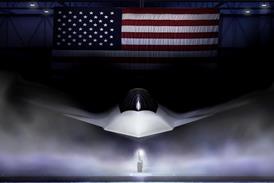Solar Impulse today revealed details of the global route for its second-generation solar-powered aircraft Si2, which is set to embark on the world's first ever official round-the-world solar flight by early March.
Speaking at a press conference in Abu Dhabi, Si2 pilots and company co-founders Bertrand Piccard and André Borschberg said the aircraft will land in 12 locations across the world and travel 18,900nm (35,000km) at speeds of between 27kt (50km/h) and 54kt "in the first attempt to fly around the globe without using a drop of fuel".
The record-setting flight will start in Abu Dhabi and span around 25 flight days, spread over five months.The route includes stops in Muscat, Oman; Ahmedabad and Varanasi, India; Mandalay, Myanmar; and Chongqing and Nanjing, China. After crossing the Pacific Ocean via Hawaii, Si2 will fly across the USA, stopping in three locations: Phoenix, New York and a location in the Midwest to be decided dependent on weather conditions. After crossing the Atlantic, the final legs include a stop-over in southern Europe or North Africa before arriving back in Abu Dhabi.
"Si2 must accomplish what no other plane in the history of aviation has achieved: flying without fuel for five consecutive days and nights with only one pilot in the unpressurised cockpit,” says Borschberg, whowas also joined at the event by Solar Impulse partner companies including Solvay, Omega, Schindler, ABB, Altran, Bayer and Google.
“With our attempt to complete the first solar-powered round-the-world flight, we want to demonstrate that clean technology and renewable energy can achieve the impossible," says Piccard. "We want youth, leaders, organisations and policymakers to understand that what Solar Impulse can achieve in the air, everyone can accomplish here on the ground in their everyday lives. Renewable energy can become an integral part of our lives, and together, we can help save our planet’s natural resources."
Si2, which made its first flight in June 2014, arrived in Abu Dhabi on 6 January with its crew of 80 technicians and engineers. The team is now conducting safety tests, test flights and training to prepare for the mission ahead.
Source: Flight International























